Highlights
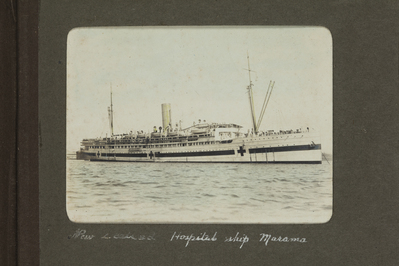
TSS Marama Albums
HMNZHS No. 2 (TSS Marama) was an ocean liner of the Union Steam Ship Company, and served as one of two New Zealand hospital ships during World War I. Digitised here are two albums of black and white photographs, taken between 1915-1919, during Marama's operation as a hospital ship. Locations on the voyages include Melbourne, Cape Town, Marseille, Southampton, Suez, Colombo and Timaru.
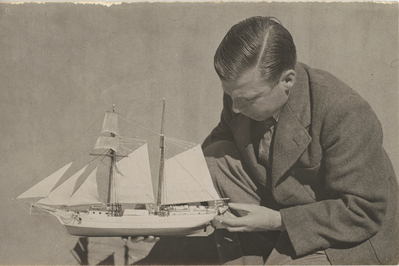
Cliff Hawkins
Clifford (Cliff) William Hawkins, New Zealand Order of Merit, maritime historian, photographer (1914– 2007)
Entranced by ships; as a young man working for the Post Office in Auckland in the 1930s, he delivered mail to the wharves. In the process, Cliff befriended Harbour Board workers, tug skippers and pilots, and they allowed him to join them in meeting in-coming ships, and to capture them in on his camera.
During World War II, while serving overseas, Hawkins continued to take photographs of ships and convoys at sea.
On his return, living in Auckland with his family, wife Shelia and four children, Hawkins began writing on New Zealand’s maritime history, particularly the history of sail. His published books were accompanied by his own photographs and illustrations. He processed his own images and built model ships.
His fascination for ships took him to East Africa, Suez, Indonesia, North America and Europe, to draw and photograph local vessels.
He co-founded the Auckland Maritime Society and was a member of the Auckland Photographic Society. He was created a Member of the New Zealand Order of Merit in 2003.
The Cliff Hawkins collection, donated by Cliff himself and son Robert (Bob) Hawkins, comprises photographs, glass plate negatives, correspondence, notebooks, bound manuscripts and ships models.
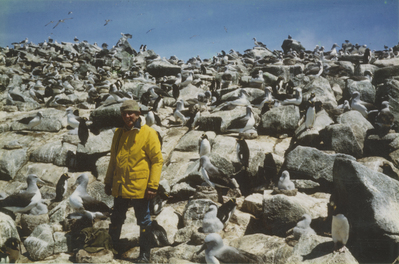
Gerry Clark
Gerry Clark was a New Zealand sailor, writer and ornithologist. He is known for his seabird research around the subantarctic islands and his circumnavigation of Antarctica in his self-built yacht TOTORORE. This collection spans the period 1982 to 1999 and comprises written correspondence, manuscripts, audio and visual recordings, bird observation records, logbooks, photographs, slides and objects. Most of this material relates to his expeditions in the Southern Ocean and around Aotearoa New Zealand.
Gerry, with his wife Marjorie and four daughters, developed an organic orchard in Kerikeri following his retirement from the Merchant Navy. After building the yacht TOTORORE in 1982, with a particular interest in seabird numbers as an indicator of ocean health, Gerry was inspired to organise expeditions in the Southern Ocean.
On one such TOTORORE voyage to the Antipodes Islands, Gerry, along with crew member Roger Sale, went missing at sea in a storm. To date only small fragments of the yacht have been found.
This Highlight Tile is just a glimpse at what can be found on the online collection, which represents the skilled seamanship, dedication and achievements of Gerald Stanley (Gerry) Clark MBE (1927-1999). For the whole online collection search for "Gerry Clark".
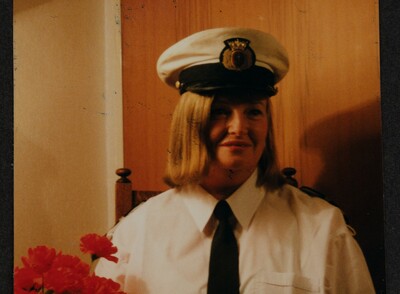
Phillippa Were
Phillippa (Pip) Were (1948-) Senior Radio Officer, Surveyor
Pip grew up in Nelson, with seafarers in her family. Her determination to work at sea developed from a young age, and coupled with her aptitude for operating machinery, her career seemed clear. She trained as a Radiotelegraph Operator in the 1970s, and became the first woman Post Office Radio Inspector at the age of twenty-three.
In 1974 she became a ship’s Radio Officer in the Merchant Service Guild and commenced a career at sea, spanning seventeen years in the 1970s and 1980s, serving on a variety of coastal vessels in New Zealand as well as overseas. She faced significant challenges as a woman in the industry at that time. Her skills culminated in becoming a Senior Radio Officer and a radio surveyor and examiner of radio operators. Pip was married to William (Bill) Were who supported her throughout her career.
This Highlight Tile is a glimpse into the Phillippa (Pip) Were online collection, that contains archive material relating to her training and role as a radio officer; including logbooks, licences, diaries, oral history recording, correspondence, flags, uniforms, radio equipment and photographs. For the whole online collection search for "Phillippa Were".
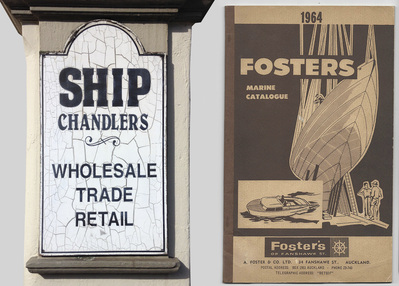
Fosters Chandlery
John Street worked at the Fosters Ship Chandlery in Auckland for more than 50 years.
Though now retired, he kept a number of maritime objects that connect back to the past. In 2017, he gifted much of his collection to the New Zealand Maritime Museum; a selection of these objects can now be viewed online, with more to come.
Over the years, John Street has been involved with a number of projects – everything from the Whitbread Round the World Race, the Percy Vos Boatshed restoration, to the annual Tug Boat race, part of the Auckland Anniversary Regatta. Working together with others who share similar interests, John’s contribution has been characterised by forward thinking and determination. Now aged in his eighties, John has a long association with a number of trusts, committees and organisations. He has also been recognised for his services to yachting and maritime affairs with a New Zealand Order of Merit.
The items and images online are evidence of just some of his many interests and relationships – both past and present.
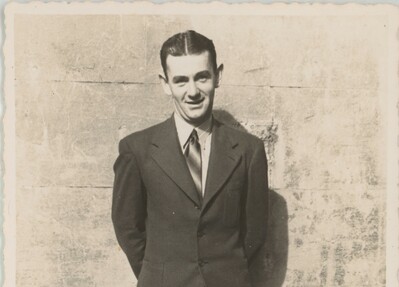
Gratton Grey
Gratton J. (Colin) Grey, Merchant Navy seafarer
Gratton J. (Colin) Grey was taken prisoner of war in 1942 when the New Zealand Merchant Navy vessel MV HAURAKI (1922) was captured by Japanese forces during World War II. He was held in Changi Jail in Singapore until his repatriation, returning home to New Zealand in 1945.
The archives show an extended network of family members, governmental departments and, in some cases, complete strangers working to keep communications alive between imprisoned seafarers, such as Colin, and their families.
For his loyal service he was decorated with nine World War II medals and returned to sea with the Mercantile Marine in 1946, serving on board the sailing ship PAMIR (1905).
The Gratton (Colin) J. Grey collection includes archives, a photograph album, pins, badges and service medals.
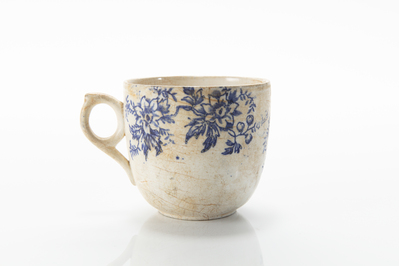
SS Maori
SS Maori went down off the coast of Cape Town, South Africa, in 1909 while on its way to Dunedin, Aotearoa New Zealand with a cargo hold of domestic items for sale. This selection, salvaged in the 1970s, is an intriguing representation of shipping and domestic life in the early twentieth century. You may notice that the name of the ship is missing a pōtae/macron – it is standard practice to present ship names as they were officially registered, misspellings included.
If you have any information to share or questions to pose, please leave us a comment. We’d love to hear from you.
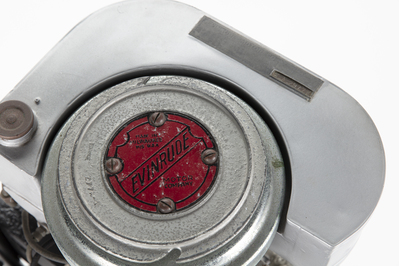
Outboard Motors
Outboard motors are the workhorses of inshore boating. Designed to work in the demanding marine environment, they represent one of the first uses of the internal combustion engine and have shared advancements over the last 100 years with automotive engines. The NZMM has a collection of over seventy outboards and has digitized the selection of mainly North American and European motors on display. They include a Waterman 1 h.p. dating from 1909 and several examples of the ubiquitous Seagull. Some of the motors were rebuilt for display at the museum in the 1990s while others are entirely original. There are also several small inboard motors on display including a Rudge 500 c.c. from 1912.